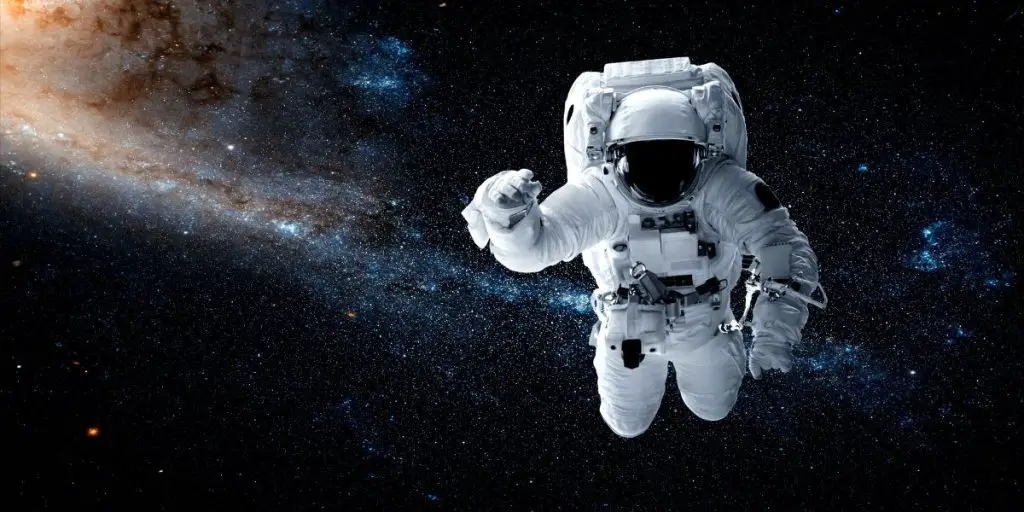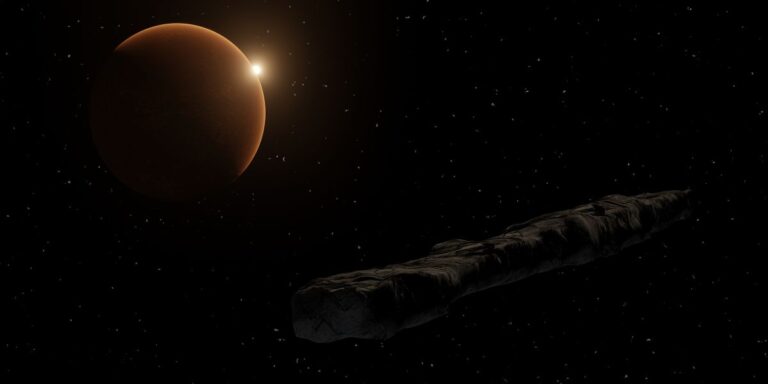15 Best Space Documentaries: Exploring the Cosmos in the Digital Age
Get ready to blast off into the vast unknown with The 15 Best Space Documentaries! From stunning visuals to gripping narratives, these documentaries will take you on an unforgettable journey through the mysteries of the universe.
Explore black holes, discover new planets, and learn about the latest breakthroughs in space exploration. Strap in and prepare for an out-of-this-world adventure!
Space has always fascinated humankind. The vastness and mystery of the universe have intrigued us for centuries. Thanks to advancements in technology, we now have the opportunity to explore and learn about space through documentaries.
Space documentaries are a great way to educate ourselves about the cosmos, gain insights into the wonders of the universe, and inspire our imagination. In this article, we will delve into the 15 best space documentaries that are a must-watch for space enthusiasts and anyone curious about the secrets of the universe.

The Ultimate List of the 15 Best Space Documentaries for Cosmic Enthusiasts!
1. Cosmos: A Spacetime Odyssey
As one of the most popular space documentaries, “Cosmos: A Spacetime Odyssey” is a captivating exploration of the universe, hosted by renowned astrophysicist Neil deGrasse Tyson.
The documentary takes viewers on a mesmerizing journey through space and time, uncovering the mysteries of the universe and delving into scientific concepts in an accessible and engaging manner.
With stunning visuals, awe-inspiring animations, and Tyson’s charismatic narration, “Cosmos: A Spacetime Odyssey” is a must-watch for anyone seeking a comprehensive understanding of the cosmos.
2. BBC Documentary 2017 – The Universe Mercury & Venus The Inner Planets
The documentary discusses Mercury and Venus, the inner planets of our solar system. It explores the differences between Venus, often referred to as Earth’s sister planet, and Earth. You will learn about Venus being described as a treacherous toxic world with extreme heat, acid clouds, and volcanic activity.
The documentary touches on the history of Venus exploration, including the Mariner 2 and Venera missions, which revealed the harsh conditions on the planet. It also highlights the unique features of Venus, such as its lack of water and the presence of metal-rich mist in its atmosphere.
You will hear about the various types of volcanic activity found on other celestial bodies, such as the moons of Neptune and Saturn, and the documentary raises the question of whether Venus is still volcanically active. The Venus Express mission, launched in 2005 by the European Space Agency, is mentioned as a current effort to study Venus further.
3. Apollo 11
“Apollo 11” is a mesmerizing documentary that chronicles the historic moon landing mission of 1969. The documentary features never-before-seen footage, audio recordings, and interviews with astronauts, providing an immersive experience of the monumental journey to the moon.
Directed by Todd Douglas Miller, “Apollo 11” captures the human spirit of exploration and the unparalleled achievements of NASA’s Apollo program, making it a must-watch for space enthusiasts and history buffs alike.
4. Journey Through The Universe
The documentary is a reflection on your journey through the universe, starting from the moon, passing by Venus, and approaching the Sun.
You will learn about the challenges and dangers of space travel, including extreme temperatures, deadly environments, and the immense power of the Sun.
The documentary also mentions the potential for finding new planets that could potentially serve as homes for humanity in the future.
It touches on the Sun’s role in both creating and destroying life, including the possibility that comets may have delivered organic material and water to Earth billions of years ago, but could also pose a threat to life on Earth in the future.
Overall, the documentary highlights the awe-inspiring and treacherous nature of space exploration, while inviting you to contemplate humanity’s place in the vastness of the universe.
5. Journey to the Andromeda Galaxy
The Andromeda Galaxy, also known as NGC-224 and M-31, is a vast, ancient colony of stars that is more than twice the size of the Milky Way. You can see it with the naked eye, and it was discovered long before the existence of other galaxies was known.
In the 18th century, philosophers like Immanuel Kant suggested that the Andromeda Galaxy might be its own separate “Island Universe” of stars. The debate about the nature of the universe and the spiral nebulae culminated in the Great Debate of 1920, where astronomers Shapley and Curtis discussed the topic.
Edwin Hubble settled the debate in 1924 by measuring pulsating Cepheid Variable stars within Andromeda and revealing the true scale of the universe, filled with millions of galaxies.
Andromeda offers a unique opportunity to study a spiral galaxy from the outside looking in. We have made mosaics of its stars, and maps of its interior, and found various objects within its bounds, such as stars, clusters, clouds, neutron stars, and black holes.
Andromeda’s structure is vastly elongated, with a visible component around 120,000 light years in diameter and an extended disk of scattered stars flung outwards by tidal interactions, giving it a maximum extension of about 220,000 light years, making it the largest object in the Local Group.
The journey to the Andromeda Galaxy involves rising above the plane of the Milky Way, passing beyond its outlying stars and satellite galaxies, and reaching intergalactic space. The conditions in intergalactic space are cold and empty, with remnants of ill-fated stars and planetary systems ejected from their galaxies by tidal forces.
6. NASA Telescope Discovered Planets Even Better for Life Than Earth
NASA’s Kepler telescope, launched in 2009 as part of NASA’s Discovery program, has discovered thousands of exoplanets during its nine years in space. Kepler observed over 530,000 stars and confirmed the existence of 2,662 new exoplanets, some of which are larger than Earth and orbit very close to their stars.
Kepler’s legacy includes the discovery of earth-sized worlds orbiting within the habitable zone or Goldilocks zone, where conditions may be suitable for liquid water to exist. One such exoplanet, k218b, located 124 light years away from Earth, has recently generated excitement among researchers as signs of liquid water have been found in its atmosphere.
Kepler’s data also revealed that red dwarf stars, which are the most common type of star in the Milky Way, may have earth-sized planets in the habitable zone. Other exoplanets, such as Kepler-186f and Kepler-1649c, have been identified as potential candidates for habitable worlds due to their size and estimated temperature.
However, out of the 2,662 exoplanets identified by Kepler, only 16 of them lie within the habitable zone, and some of them are tidally locked or more similar to Neptune than Earth. Further research and analysis of Kepler’s data, in conjunction with data from other telescopes, continue to provide new insights into the potential for life beyond Earth.
7. Back to the Moon FULL SPECIAL
The “Back to the Moon” FULL SPECIAL on NOVA, a PBS America program on YouTube, discusses your renewed interest in returning to the moon after 50 years after the last manned mission.
The special explores the reasons behind this renewed interest, including the discovery of valuable resources such as metal deposits and the potential presence of water on the moon.
The special also delves into the economic and technological challenges of establishing a human presence on the moon, including the involvement of private companies and the need for new ownership rights for resource exploitation.
NASA’s Lunar Reconnaissance Orbiter, launched in 2009, is highlighted as a key tool for mapping the moon’s surface and gathering data for future human exploration.
8. A Journey Beyond The Milky Way
The documentary “A Journey Beyond the Milky Way” explores the vastness of the universe and shares fascinating discoveries in space exploration with you.
It discusses galaxies, including the Andromeda galaxy, the Canis Major dwarf galaxy, and the Sagittarius dwarf elliptical galaxy, which are part of the local group of galaxies.
It also mentions the Large and Small Magellanic Clouds, which are dwarf galaxies and satellites of the Milky Way. The documentary touches on the structure of galaxies, including their size and classification, as well as the mystery of dark matter.
It also speculates on the possibility of intelligent life forms in the universe. The documentary provides insights into the distances and locations of these astronomical objects in relation to Earth and the Milky Way.
9. The Story of the Hubble Space Telescope
In the “NASA’s Incredible Discovery Machine: The Story of the Hubble Space Telescope” documentary, you’ll hear from astronomers and scientists who discuss the profound significance of the Hubble Space Telescope.
Through interviews, they highlight how the Hubble has revolutionized astronomy and astrophysics by providing unparalleled views of the universe from above the Earth’s atmosphere.
The documentary also delves into the challenges faced during the building and launching of the Hubble, as well as its impact on our understanding of the cosmos. Described as a monumental achievement in space exploration, on par with the cathedrals of the Renaissance, Hubble’s legacy is portrayed as exceeding initial expectations.
The documentary features captivating clips of the Hubble being launched and breathtaking images captured by the telescope, all accompanied by awe-inspiring music, adding to the sense of wonder and amazement surrounding this incredible scientific achievement.
10. MARS – A Traveller’s Guide to the Planets
If you’re looking for a captivating documentary that delves into the enigmatic world of Mars, “MARS – A Traveller’s Guide to the Planets” is a must-watch. This documentary takes you on an awe-inspiring journey to the red planet, uncovering its mysteries and marvels.
You’ll learn about Mars’ unique features, including its towering volcanoes, sprawling canyons, and breathtaking landscapes. Through vivid descriptions and stunning visuals, the documentary paints a vivid picture of Mars’ distinct characteristics and how it shares a common history with our own planet, Earth.
The documentary also sheds light on the challenges and dangers of interplanetary travel to Mars, as well as the remarkable advancements in robotic exploration on the planet. It delves into the intricacies of the search for signs of life on Mars and the possibilities of human exploration in the future.
One of the highlights of the documentary is the virtual tour of Mars, using images and data sent back by rovers like Spirit and Opportunity. You’ll get a tantalizing glimpse of what it would be like to explore the red planet as if you were there yourself.
What sets this documentary apart is its ability to balance perplexity and burstiness, keeping you engaged with its captivating content without losing specificity or context. It weaves together scientific knowledge with stunning visuals, making it a compelling and informative viewing experience.
11. Monster Black Hole
Imagine watching a captivating documentary that takes you on a journey into the enigmatic world of black holes. These mysterious and awe-inspiring phenomena are dark centers of gravity that have the power to swallow everything in their path.
As you delve deeper into the documentary, you’re taken on a thrilling exploration of what would happen if you were to get close to a black hole and fall past the point of no return, into a realm of twisted space and time.
The documentary goes on to delve into the fascinating formation and size of black holes, shedding light on how they are detected through high-energy gamma-ray bursts. You’re intrigued to learn about the violent chain of events that occurs when a massive star collapses to form a black hole, and how black holes are distinct from compacted matter.
Furthermore, the documentary touches on the intriguing concept of gravity as a warping of space and time, providing you with a deeper understanding of the mind-bending nature of black holes. You’re left in awe as you learn about the powerful legacy that black holes leave behind in the form of warped space-time, forever changing the fabric of the universe.
12. Journey to the Edge of the Universe
“Journey to the Edge of the Universe” is a visually stunning documentary that takes viewers on an epic journey through the vastness of the cosmos.
The documentary presents a virtual tour of the universe, from the familiar planets of our solar system to distant galaxies and beyond. With breathtaking visuals and awe-inspiring narration, “Journey to the Edge of the Universe” offers a humbling perspective of the immense scale and beauty of our universe.
13. Space Race to the Moon
The documentary delves into the historical background of the Cold War era and the intense competition between the United States and the Soviet Union.
It mentions the pivotal moment when the Soviet Union launched the first artificial satellite, Sputnik, in 1957, which prompted the establishment of NASA in the United States in 1958.
The challenges and advancements in rocket technology, including the development of the Saturn I rocket and the h1 engine, based on Germany’s V2 rocket from World War II, are highlighted.
The documentary also acknowledges Yuri Gagarin’s success as the first human to orbit the Earth in 1961 and Alan Shepard’s suborbital flight as the first American in space.
Finally, it references President Kennedy’s ambitious goal of landing a man on the moon and safely returning him to Earth before the end of the decade, despite the United States’ limited success in satellite launches at that time.
14. How will humanity colonize the solar system?
The documentary explores various proposals from space agencies, private aerospace companies, and futurists for establishing a human presence on these celestial bodies.
It delves into different concepts and designs for lunar and Martian habitats, including underground bases, space station modules, and lava tunnels.
The challenges and advantages of colonizing these bodies, such as temperature, radiation, and resources like water and energy, are also discussed.
Despite these challenges, the documentary concludes that with creative solutions, humanity can overcome them, and one day real colonists may call the moon or Mars their second home.
It emphasizes the importance of maintaining high levels of both perplexity and burstiness while retaining specificity and context.
15. PLUTO AND BEYOND – A Traveler’s Guide to the Planets
The documentary “PLUTO AND BEYOND – A Traveler’s Guide to the Planets.” The documentary discusses Pluto, which is smaller than Earth’s moon and has never been visited by humans until now. It mentions that astronomers recently decided not to call Pluto a planet anymore, which is a controversial topic.
The documentary follows NASA’s New Horizons mission, launched in 2006, which is set to become the first visitor to Pluto and is expected to arrive in 2015. The mission had to take a shortcut using Jupiter’s gravity field as a slingshot to speed up the spacecraft and reduce travel time.
The documentary explores Pluto’s mysteries, such as its pink color, where it came from, and its connection to Earth. It also discusses Charon, Pluto’s largest moon, and how Pluto’s demotion from being considered a planet has been a controversial topic.
The documentary highlights the challenges of exploring the distant and cold world of Pluto and the excitement of venturing beyond our solar system to search for Earth-like planets around other stars.
Conclusion
In conclusion, space documentaries provide a captivating and educational journey through the wonders and mysteries of the universe.
From the birth of the universe to the possibilities of extraterrestrial life, from the achievements of space missions to cutting-edge research in astrophysics, these documentaries offer a unique perspective of our place in the cosmos.
With their visually stunning imagery, thought-provoking narratives, and expert insights, these 15ƒ best space documentaries are a must-watch for anyone who is fascinated by the mysteries and marvels of outer space.
FAQs:
Are these space documentaries based on scientific facts?
Yes, these documentaries are based on scientific research and findings, providing accurate information about space and astrophysics.
Can I watch these documentaries online?
Yes, many of these documentaries are available for streaming online on platforms like Netflix, Amazon Prime, and other streaming services.
Are these documentaries scientifically accurate?
Yes, these documentaries are based on scientific research and strive to provide accurate information about space and astrophysics. However, it’s always important to verify information from reliable sources.
Can I learn something new from these documentaries even if I’m already knowledgeable about space?
Absolutely! These documentaries cover a wide range of topics and explore various aspects of space, from astronomy to astrophysics, and space exploration to the possibilities of extraterrestrial life. Even if you’re already knowledgeable about space, these documentaries can offer new insights, perspectives, and discoveries.
How can I make the most out of watching these documentaries?
To make the most out of watching these documentaries, it’s recommended to watch them in a quiet and distraction-free environment, take notes, and further research the topics that interest you. Discussing with fellow space enthusiasts or engaging in online forums can also enhance your understanding and learning experience.
Subscribe to our newsletter
Get Access To Our Latest Documentaries Before Everyone Else






